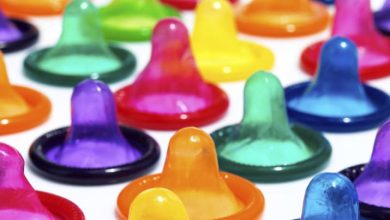EXCLUSIVE: Tips To Avoid Getting Pregnant During Sex
Tips to help you add your quota to the betterment of Nigerians economy

Sperm can live inside your uterus for up to 5 days after having sex, and pregnancy can only occur if there is sperm in your uterus or fallopian tubes when you ovulate.
You have many tools to prevent pregnancy. Birth control options are plentiful, but some work better than others. The key is to make sure you’re using them the right way.
Here’s what you can do:
– You’re on birth control
Hormonal birth control methods such as the pill, patch, ring, implant, shot, or IUD significantly decrease your chances of getting pregnant, but they don’t eliminate your chances. These experts say methods work in various ways. For example, IUDs block sperm from reaching the egg, while the pill, ring, and patch prevent ovulation.
– You’re on your period
While it’s not impossible to get pregnant while on your period, your chances are pretty slim. Your lowest chance of getting pregnant while on your period is during the first day of bleeding. But the chances increase with each passing day as you get closer to your ovulation window.
If your typical menstrual cycle is close to the average 28- to 30-day cycle, then the likelihood of getting pregnant while on your period is low. But if your cycle is shorter, your chances of getting pregnant while on your period go up.
– You use the ‘pull-out’ method
The pull-out method may be the world’s oldest form of birth control. The pull-out method, also known as withdrawal, involves pulling the penis out of the vagina before ejaculation. While some studies have found that withdrawal can be as high as 96% effective with perfect use, it isn’t easy to maintain perfect use with this method.
– You use a condom
When using a condom to avoid pregnancy (or sexually transmitted infections, for that matter), it’s vital to use it correctly.
Correct usage means the condom is rolled onto the penis (or inserted into the vagina in the case of internal or female condoms) before there’s any contact between genitals and skin.
According to research, the chance of getting pregnant with male condoms is about 18%, and with female condoms, it’s 21%.
With perfect condom use every single time, those odds decrease to 2%. Some nursing parents use the lactational amenorrhea method (LAM) or “breastfeeding method” to prevent pregnancy after giving birth.
– LAM as a form of birth control relies on the temporary pause in ovulation that often accompanies breastfeeding in the first several months postpartum.
While breastfeeding, the hormone estrogen, which is responsible for getting your period each month, is suppressed experts say, hence, preventing pregnancy.






